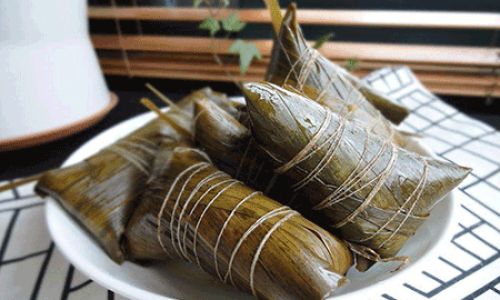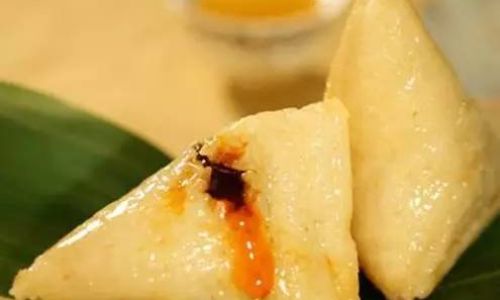Table of content
Passion fruit, with its vibrant purple or yellow exterior and tangy-sweet pulp, is a tropical delight loved by many for its unique flavor and nutritional benefits. However, like most perishable fruits, passion fruit requires proper storage to maintain its freshness, texture, and taste. A common question among home cooks and passion fruit enthusiasts is: Can passion fruit be refrigerated? This article delves into the science behind refrigerating passion fruit, explores its shelf life, and provides actionable tips to ensure this exotic fruit stays at its best for as long as possible.
Understanding Passion Fruit: A Brief Overview
Before diving into storage methods, it’s essential to understand the nature of passion fruit. Native to South America, passion fruit (Passiflora edulis) thrives in tropical and subtropical climates. Its thick, leathery rind protects a jelly-like pulp filled with crunchy, edible seeds. The fruit is rich in vitamins A and C, fiber, and antioxidants, making it a nutritious addition to diets. However, its delicate structure also makes it susceptible to spoilage if not stored correctly.
The Debate: To Refrigerate or Not to Refrigerate?
The answer to whether passion fruit can be refrigerated is not a straightforward “yes” or “no.” It depends on several factors, including the fruit’s ripeness, intended use, and the storage environment. Let’s break down the pros and cons of refrigeration.

Refrigeration Slows Ripening
Passion fruit, like many fruits, continues to ripen after harvesting. This process is driven by ethylene gas, a natural plant hormone. Refrigeration slows down ethylene production, effectively delaying ripening. For unripe passion fruit, this can be advantageous if you want to extend its shelf life without compromising quality. However, if the fruit is already ripe, refrigeration may cause it to lose some of its vibrant flavor over time.
Temperature and Humidity Control
Refrigerators provide a controlled environment with lower temperatures (typically 40°F or 4°C) and moderate humidity. These conditions can inhibit the growth of mold and bacteria, which are primary causes of spoilage. However, excessive cold can damage the fruit’s cell structure, leading to a mushy texture or altered taste.
Impact on Texture and Flavor
While refrigeration preserves passion fruit for longer, it may slightly alter its texture. The pulp can become thicker, and the rind may wrinkle faster than at room temperature. Some enthusiasts argue that refrigerated passion fruit loses its signature tropical aroma, though this is subjective and varies by variety.
How to Refrigerate Passion Fruit Properly
If you decide to refrigerate passion fruit, following these steps will maximize its shelf life and quality:
Select Ripe but Firm Fruit
Choose passion fruit that is slightly wrinkled but still plump. Overripe fruit with deep wrinkles or soft spots will deteriorate faster, even in the fridge.
Avoid Washing Before Storage
Moisture accelerates spoilage. Do not wash the fruit until you’re ready to use it. Instead, gently wipe off any dirt with a dry cloth.

Use Perforated Bags or Containers
Store passion fruit in a breathable container, such as a paper bag or a plastic container with holes. This allows ethylene gas to escape while maintaining humidity levels. Avoid sealing the fruit in airtight plastic bags, as this can trap moisture and promote mold.
Place in the Crisper Drawer
The crisper drawer of your refrigerator is designed to regulate humidity, making it ideal for fruits and vegetables. Adjust the drawer’s humidity setting to “medium” to prevent the fruit from drying out.
Monitor Regularly
Check the fruit every 2–3 days for signs of spoilage, such as mold, leakage, or an off smell. Remove any damaged pieces immediately to prevent contamination.
Shelf Life of Passion Fruit: Refrigerated vs. Room Temperature
-
At Room Temperature (68–77°F or 20–25°C):
Ripe passion fruit will last 3–5 days. Unripe fruit may take 5–7 days to ripen, after which it should be consumed or refrigerated. -
In the Refrigerator (40°F or 4°C):
Ripe passion fruit can last 1–2 weeks. Unripe fruit may take longer to ripen in the fridge, so consider leaving it at room temperature until it reaches the desired ripeness. -
Frozen Passion Fruit:
For long-term storage, freeze the pulp. Scoop out the seeds and pulp, place them in an airtight container, and freeze for up to 6 months. Thaw in the refrigerator before use.
Signs That Passion Fruit Has Spoiled
Even with proper storage, passion fruit will eventually spoil. Watch for these indicators:
- Mold or Fuzzy Growth: Especially on the rind or around the stem.
- Discoloration: The rind may turn brown or black, and the pulp may darken.
- Off Smell: A fermented or sour odor indicates spoilage.
- Leakage: Liquid oozing from the fruit is a red flag.
- Shriveled Texture: While some wrinkling is normal, excessively shriveled or dry fruit should be discarded.
Alternative Storage Methods
If refrigeration isn’t an option, consider these alternatives:
Countertop Ripening
Place unripe passion fruit in a paper bag at room temperature. Add an apple or banana to speed up ripening (these fruits emit ethylene gas).
Freezing
As mentioned earlier, freezing the pulp is an excellent way to preserve passion fruit for smoothies, desserts, or sauces.
Dehydration
Slice the rind into thin strips and dehydrate them to make crispy, tangy snacks. Store in an airtight container for up to a month.
When to Avoid Refrigeration
While refrigeration is generally safe, there are scenarios where it’s better to keep passion fruit at room temperature:

- If Planning to Use It Soon: For immediate consumption (within 1–2 days), refrigeration isn’t necessary.
- For Ripening Unripe Fruit: Cold temperatures slow ripening, so leave unripe passion fruit on the counter until it matures.
- For Maximizing Flavor: Some chefs argue that refrigerated passion fruit loses its aromatic intensity, so they prefer using it fresh for recipes like salads or cocktails.
Creative Ways to Use Passion Fruit Before It Spoils
To avoid waste, incorporate passion fruit into your meals and beverages creatively:
- Smoothies and Juices: Blend the pulp with mango, pineapple, or coconut water for a tropical drink.
- Desserts: Use passion fruit curd in tarts, layer it in parfaits, or swirl it into cheesecake.
- Sauces and Dressings: Whisk the pulp into vinaigrettes or drizzle it over grilled meats.
- Cocktails: Mix the juice with rum, vodka, or tequila for a zesty twist.
- Yogurt or Oatmeal Topping: Add a spoonful of pulp for a tangy breakfast boost.
Common Mistakes to Avoid
- Storing Unripe Fruit in the Fridge: This halts ripening, leaving you with hard, inedible fruit.
- Overcrowding the Container: Poor airflow can lead to moisture buildup and mold.
- Ignoring Temperature Fluctuations: Avoid placing passion fruit near the refrigerator door, where temperatures fluctuate.
- Using Damaged Fruit: Even minor cuts or bruises can accelerate spoilage.
The Science Behind Refrigeration and Fruit Spoilage
Fruits spoil due to enzymatic reactions, microbial growth, and oxidation. Refrigeration addresses these issues by:
- Lowering Enzyme Activity: Cold temperatures slow down the enzymes that cause ripening and softening.
- Inhibiting Microbes: Most bacteria and fungi thrive at warm temperatures, so cold slows their reproduction.
- Reducing Oxidation: Cool environments minimize the breakdown of nutrients and pigments.
However, refrigeration isn’t foolproof. Passion fruit’s high water content (about 73%) makes it prone to freezer burn if stored improperly. Always use airtight containers for freezing.
Conclusion: Balancing Freshness and Flavor
Refrigerating passion fruit is a viable way to extend its shelf life, but it requires careful execution. By selecting ripe fruit, using breathable storage, and monitoring for spoilage, you can enjoy this tropical gem for up to two weeks. Whether you prefer it fresh in a summer salad or blended into a frozen margarita, proper storage ensures that every bite bursts with vibrant flavor. So, the next time you bring home a batch of passion fruit, remember—a little refrigeration (and a lot of care) can go a long way.
Final Tip: Experiment with both refrigerated and fresh passion fruit to decide which method best suits your taste preferences. After all, food storage is as much an art as it is a science!






0 comments